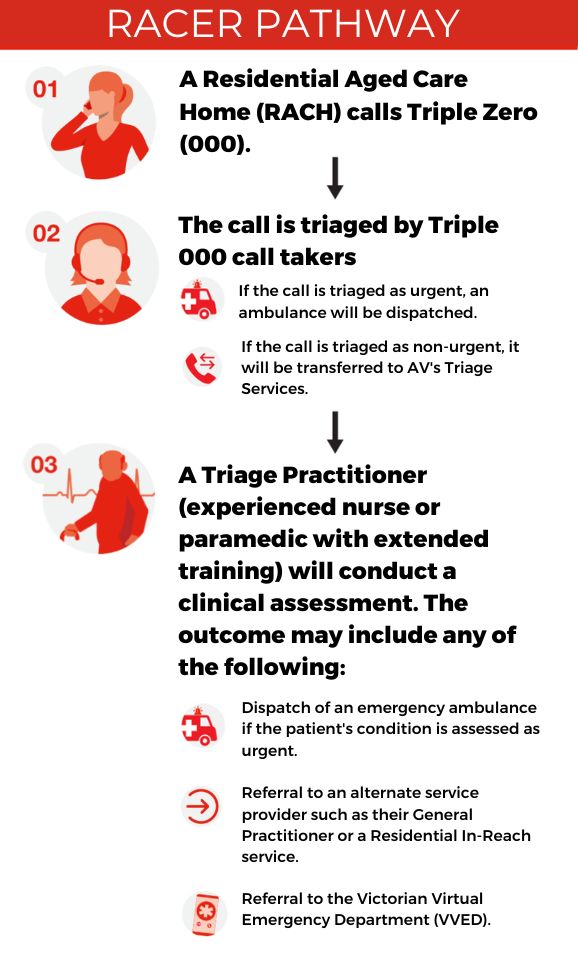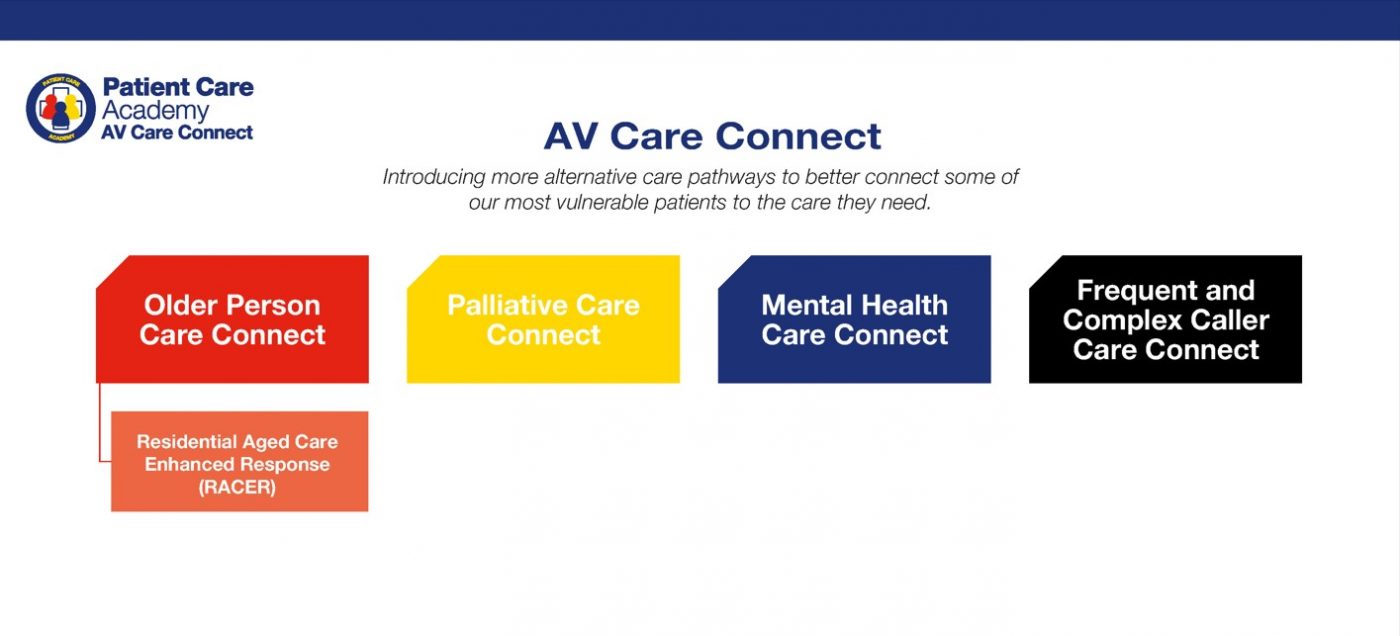RACER for aged care residents
The Residential Aged Care Enhanced Response (RACER) Pathway
The RACER pathway connects and coordinates Triple Zero (000) calls from residential aged care homes (RACHs) to best meet patients’ individual care needs. For many patients, the Best Care option is a medical or nursing assessment within their home environment (either in person or via telehealth) rather than transport to a hospital emergency department. This approach reduces the risk of complications that are often associated with hospitalisation of older persons, such as delirium, hospital-acquired trauma (such as falls) and infections.
The RACER pathway was co-designed with our people, RACH representatives, and health system partners as part of the AV Care Connect program under the Patient Care Academy. Further information on this initiative can be found on the Patient Care Academy page.
The RACER pathway commenced in 2022 and is explained further in the video below, which was produced at the time the pathway commenced.
Video produced August 2022
How RACER works
Through the RACER pathway, Triple Zero (000) calls for RACH residents who are experiencing non-urgent medical issues, are transferred to AV’s Triage Services. Triage Practitioners (experienced nurses and paramedics with advanced training) conduct a thorough patient assessment and refer eligible patients directly to the service that best meets the individual’s needs. This process is illustrated below.
RACER was developed with the addition of the Victorian Virtual Emergency Department (VVED) to an existing suite of referral options for AV’s Triage Practitioners to consider for appropriate RACH patients. The VVED is a telehealth service that connects patients to highly skilled emergency doctors and nurses, virtually. Other service options under RACER include but are not limited to: the patient’s general practitioner (GP); Residential In-Reach (in-person assessment conducted by doctors and/or nurses from a hospital local to the patient’s RACH); and locum doctors. These services can also be organised directly by RACH staff, saving Triple Zero (000) calls for emergencies.
Patients will continue to receive an ambulance response, and transport to a hospital emergency department, when required.

RACER also comprises the introduction of an Older Person Care Connect Lead. This role supports AV staff with clinical and subject matter expertise, specialist advice, and education, with a focus on provision of care for older persons in their home environment.
Please send us an email if you have any questions about the RACER pathway.
Connecting to the VVED
It is widely accepted that older persons often have improved outcomes and recovery when care is provided in-home.
Additionally, older persons and their families commonly prefer to receive care in-home as opposed to hospital where it is considered safe and effective in meeting their needs.
Check out how the VVED can support older persons and RACH staff in the video below.

